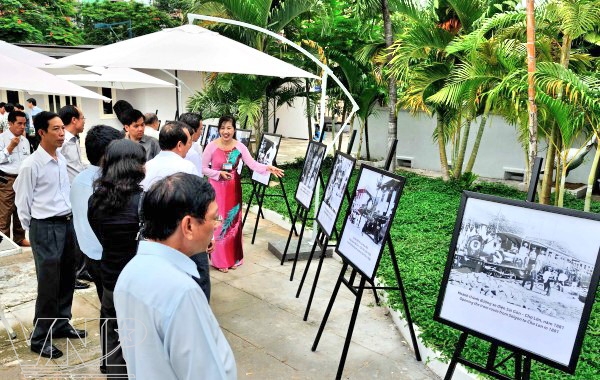Sai Gon (Present-day Ho Chi Minh City) was established more than 300 years ago. There seem to be invisible strings connecting the past and present, which shows the rapid changes of the city throughout its history.
In the early 17th century most of the land in South Vietnam was fallow with vast wild forests and a sparse population. In the place where Ho Chi Minh City is situated now, there was a small town. It was also a place for local people to do businesses. In 1698 Nguyen Huu Canh established Gia Dinh Citadel and the districts of Phuoc Long and Tan Binh. It was considered the beginnings of Ho Chi Minh City.
In 1790, Nguyen Anh who later became King Gia Long, ordered the construction of a citadel of the western Vauban style under the design of Le Brun and Victor Olivier. The citadel had an area of about 3,800m and was located at the crossroads of the present-day Dinh Tien Hoang, Le Thanh Ton, Nam Ky Khoi Nghia and Nguyen Dinh Chieu Streets. After the French arrived in Vietnam many buildings of Gothic, Colompage and Savoie styles were built in large areas where there were many green trees. These buildings created an elegant image for Sai Gon. Some of them are now the Ho Chi Minh City Hall, the Municipal Theatre, the Notre-Dame Cathedral, the City Post Office, Continental and Majestic Hotels and Ben Thanh Market, which have long been familiar to everyone, even those who have never visited the city.

Catinat Street (now Dong Khoi Street) in 1926.

The French School of the Far East in 1926 (now the National Museum of Vietnamese History, Ho Chi Minh City’s Branch).

The Palace of Indochina’s Governor General (now the Reunification Place) in 1882.

The Southern Governor’s Palace (now Ho Chi Minh City Museum) in 1926.

Charner Trade Centre (now Saigon Tax Trade Centre) in 1926.

The crossroad of Catinat and Dupre Captain Streets (now Dong Khoi-Mac Thi Buoi Crossroad) in 1926.

Majestic Hotel in 1926.

Hotel de Ville de Saigon (now Ho Chi Minh City Hall) in 1926.

Notre-Dame Cathedral.

Tau Hu Canal (also called Binh Dong Wharf) in Cho Lon in 1926.

The post running between Sai Gon and Can Tho in 1930.

Teacher and pupils in 1900.

A Sai Gon ritual band in 1920.

A performance by Sai Gon Tuong artists in 1920.

Instrumentalists of a singing troupe in the South in the first years of the 20th century.

Performance costumes of female instrumentalists.

The “Sai Gon Before” photo exhibition held outside the Ho Chi Minh City Museum attracts a great number of people. |
Recently, a photo exhibition entitled “Sai Gon Before” was organized by the Culture, Sports and Tourism Department and the Ho Chi Minh City Museum. The exhibition showcased 60 black-and-white photos featuring the architecture, culture, arts and daily activities of people in Sai Gon at the end of the 19th and the beginning of the 20th century.
People had different feelings while viewing the photos but they shared a single thought, that although historical vestiges have faded or been lost, each street and each road remind them of Sai Gon in the past. Addressing the opening ceremony of the exhibition, Nguyen Van Quynh, Chairman of Ho Chi Minh City Antiques Association said: “The images of Sai Gon Before are old but also very new. They remind me of Sai Gon in the past and help people learn about the city’s development. The exhibition introduces things of the past and is very valuable.”
Story: Nguyen Vu Thanh Dat - Photos: Nguyen Luan – File
Story: Nguyen Vu Thanh Dat - Photos: Nguyen Luan – File